Effects of Bentonite Nanoclay and Cetyltrimethyl Ammonium Bromide Modified Bentonite Nanoclay on Phase Inversion of Water-in-Oil Emulsions
Abstract
:1. Introduction
2. Materials and Methods
2.1. Materials
2.2. Aqueous Dispersions of Nanoclay
2.3. Preparation of CTAB-Modified Bentonite Nanoclay
2.4. Preparation of Emulsions
2.5. Contact Angle Measurement
2.6. Dynamic Light Scattering and Zeta Potential Measurements
3. Results and Discussion
3.1. Electron Microscopy
3.2. Dynamic Light Scattering and Zeta Potential Results
3.3. Contact Angle
3.4. Emulsions Stabilized by Unmodified Bentonite Nanoclay
3.5. Emulsions Stabilized Solely by CTAB
3.6. Comparing the Effects of CTAB Alone and Unmodified Nanoclay Alone on Catastrophic Phase Inversion of W/O Emulsions
3.7. Emulsions Stabilized by Surfactant-Modified Bentonite Nanoclay (NC-Bt–CTAB)
4. Conclusions
Author Contributions
Funding
Conflicts of Interest
References
- Binks, B.P.; Lumsdon, S.O. Catastrophic Phase Inversion of Water-in-Oil Emulsions Stabilized by Hydrophobic Silica. Langmuir 2000, 16, 2539–2547. [Google Scholar] [CrossRef]
- Binks, B.P. Particles as surfactants—Similarities and differences. Curr. Opin. Colloid Interface Sci. 2002, 7, 21–41. [Google Scholar] [CrossRef]
- Aveyard, R.; Binks, B.P.; Clint, J.H. Emulsions Stabilised Solely by Colloidal Particles. Adv. Colloid Interface Sci. 2003, 102, 503–546. [Google Scholar] [CrossRef]
- Binks, B.P. Influence of Particle Wettability on the Type and Stability of Surfactant-Free Emulsions. Langmuir 2000, 16, 8622–8631. [Google Scholar] [CrossRef]
- Tunc, S.; Duman, O.; Kanci, B. Rheological measurements of Na-bentonite and sepiolite particles in the presence of tetradecyltrimethylammonium bromide, sodium tetradecyl sulfonate and Brij 30 surfactants. Colloids Surf. A Physicochem. Eng. Asp. 2012, 398, 37–47. [Google Scholar] [CrossRef]
- Moosavi, M. Bentonite clay as a natural remedy: A brief review. Iran. J. Public Health 2017, 46, 1176–1183. [Google Scholar]
- Perotti, G.F.; Barud, H.S.; Messaddeq, Y.; Ribeiro, S.J.L.; Constantino, V.R.L. Bacterial cellulose-laponite clay nanocomposites. Polymer 2001, 52, 157–163. [Google Scholar] [CrossRef]
- Karkamkar, A.; Aardahl, C.; Autrey, T. Advanced Applications of Engineered Nanomaterials. Mater. Matters 2007, 2, 10–15. [Google Scholar]
- Jian, X.; Xuebing, W.; Bingyao, D.; Qingsheng, L. Modification of montmorillonite by different surfactants and its use for the preparation of polyphenylene sulfide nanocomposites. High Perform. Polym. 2016, 28, 618–629. [Google Scholar] [CrossRef]
- Tsugita, A.; Takemoto, S.; Mori, K. Studies on O/W Emulsions Stabilized with Insoluble Montmorillonite-Organic Complexes. J. Colloid Interface Sci. 1983, 95, 551–560. [Google Scholar] [CrossRef]
- Tambe, D.; Paulis, J.; Sharma, M.M. Factors Controlling the Stability of Colloid-Stabilized Emulsions. J. Colloid Interface Sci. 2002, 171, 463–469. [Google Scholar] [CrossRef]
- Cui, Z.G.; Yang, L.L.; Cui, Y.Z.; Binks, B.P. Effects of surfactant structure on the phase inversion of emulsions stabilized by mixtures of silica nanoparticles and cationic surfactant. Langmuir 2010, 26, 4717–4724. [Google Scholar] [CrossRef] [PubMed]
- Yan, N.; Masliyah, J.H. Effect of pH on adsorption and desorption of clay particles at oil–water interface. J. Colloid Interface Sci. 1996, 181, 20–27. [Google Scholar] [CrossRef]
- Kim, J.K.; Rühs, P.A.; Fischer, P.; Hong, J.S. Interfacial localization of nanoclay particles in oil-in-water emulsions and its reflection in interfacial moduli. Rheol. Acta 2013, 52, 327–335. [Google Scholar] [CrossRef]
- Cipriano, B.H.; Raghavan, S.R.; McGuiggan, P.M. Surface tension and contact angle measurements of a hexadecyl imidazolium surfactant adsorbed on a clay surface. Colloids Surf. A Physicochem. Eng. Asp. 2005, 262, 8–13. [Google Scholar] [CrossRef]
- Desmond, A.; Desai, F.; Hayes, K. Effect of cationic surfactants on organic liquid-water capillary pressure-saturation relationships. Water Resour. Res. 1994, 30, 333–342. [Google Scholar] [CrossRef]
- Jouany, C.; Chassin, P. Determination of the Surface Energy of Materials by Using Contact Angle Measurements. Colloids Surf. 1987, 27, 289–303. [Google Scholar] [CrossRef]
- Ogunlaja, S.B.; Pal, R.; Sarikhani, K. Effects of starch nanoparticles on phase inversion of Pickering emulsions. Can. J. Chem. Eng. 2018, 96, 1089–1097. [Google Scholar] [CrossRef]
- Pal, R. Modeling of Sedimentation and Creaming in Suspensions and Pickering Emulsions. Fluids 2019, 4, 186. [Google Scholar] [CrossRef] [Green Version]
- Pal, R. A novel method to determine the thermal conductivity of interfacial layers surrounding the nanoparticles of a nanofluid. Nanomaterials 2014, 4, 844–855. [Google Scholar] [CrossRef] [Green Version]
- Gabr, M.H.; Phong, N.T.; Abdelkareem, M.A.; Okubo, K.; Uzawa, K.; Kimpara, I.; Fujii, T. Mechanical, thermal, and moisture absorption properties of nano-clay reinforced nano-cellulose biocomposites. Cellulose 2013, 20, 819–826. [Google Scholar] [CrossRef]
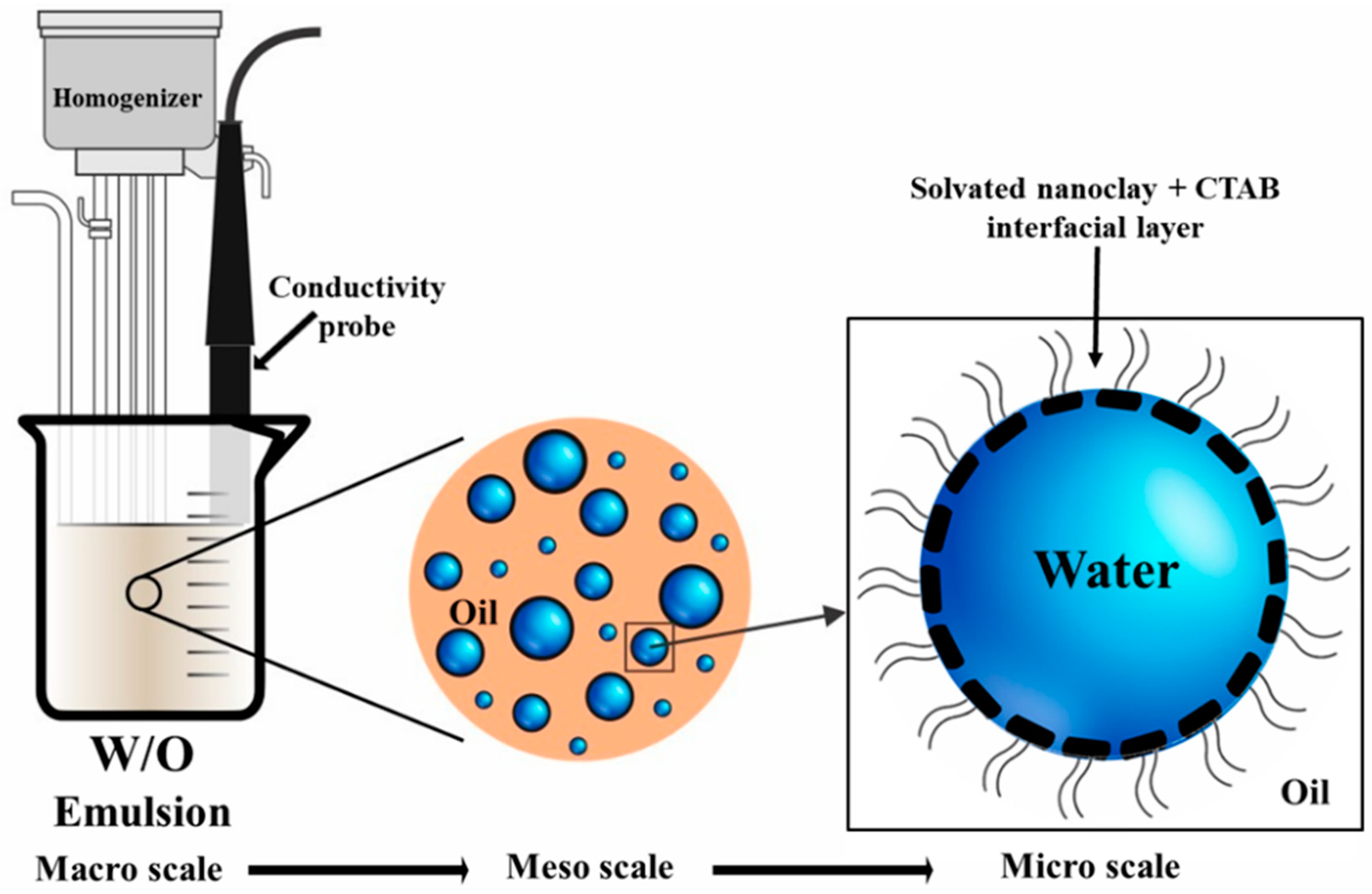

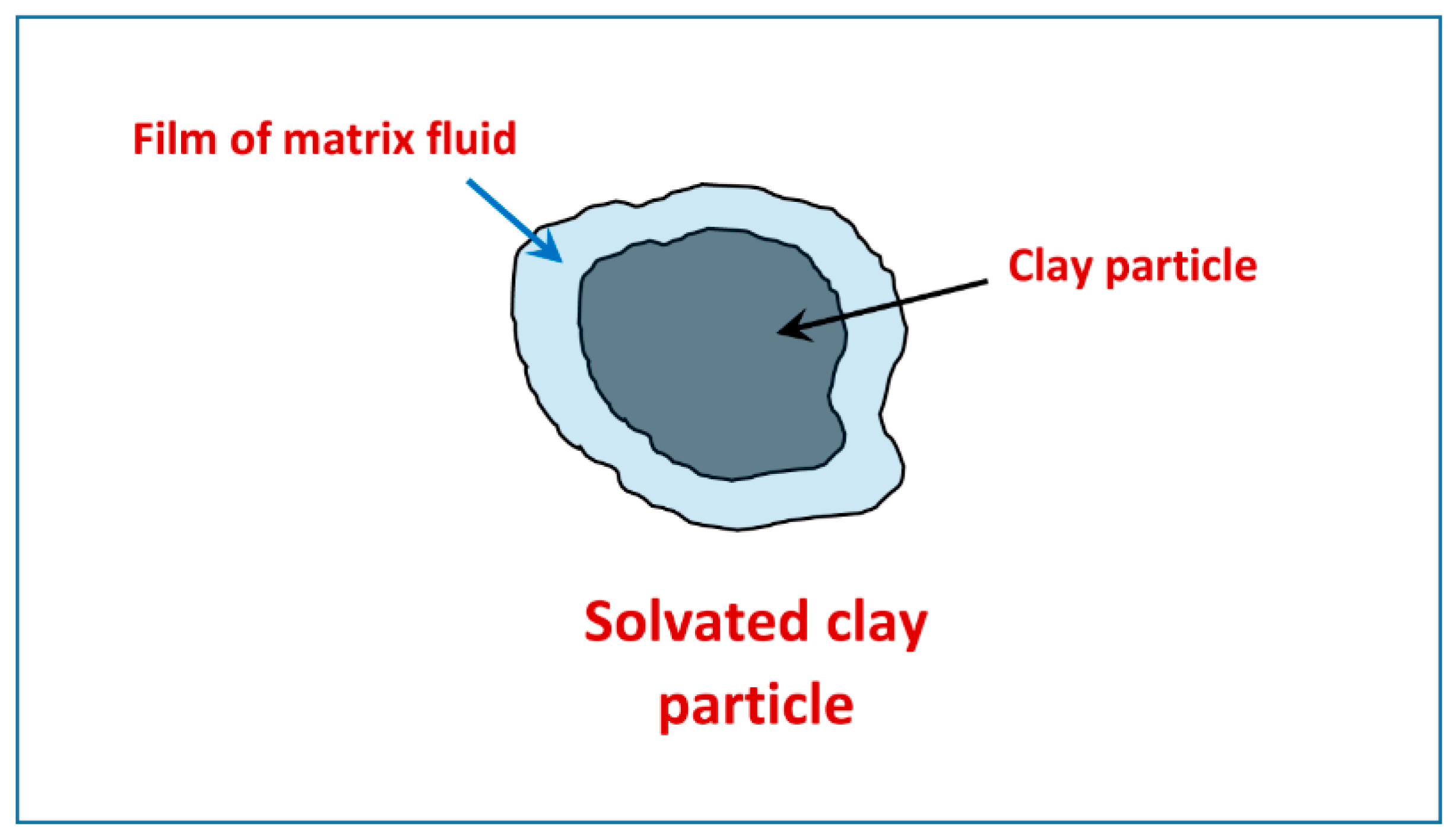
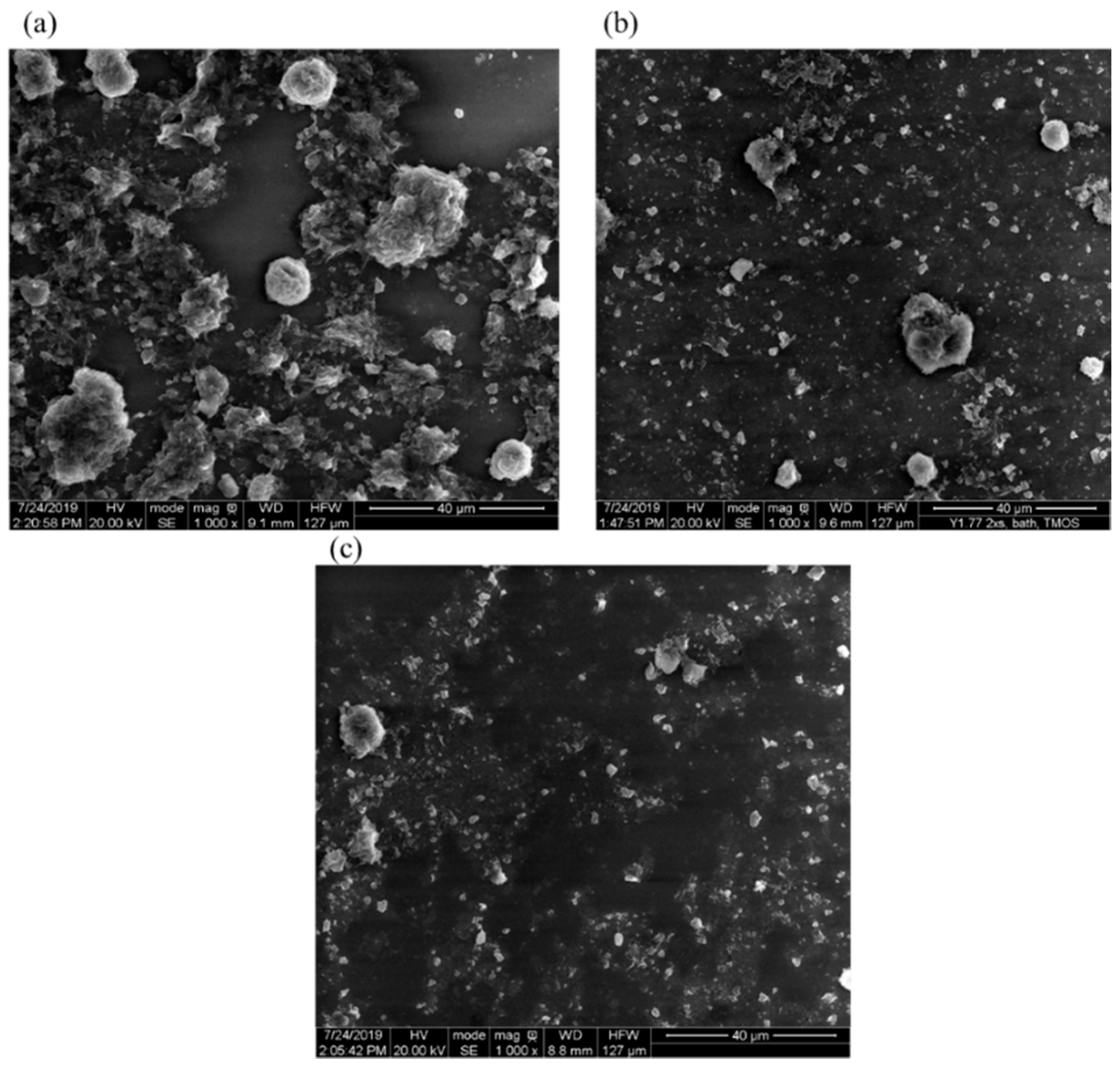
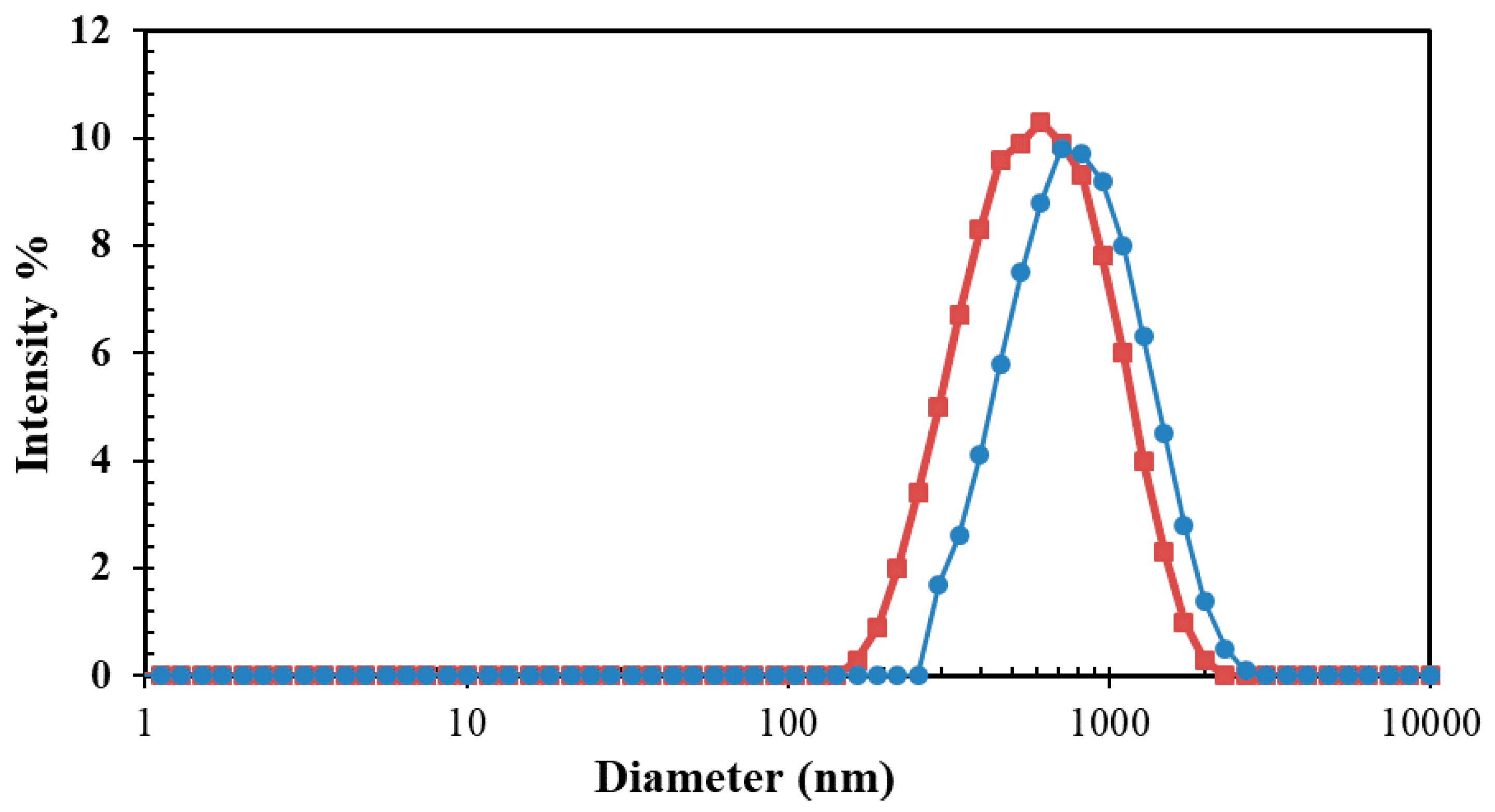
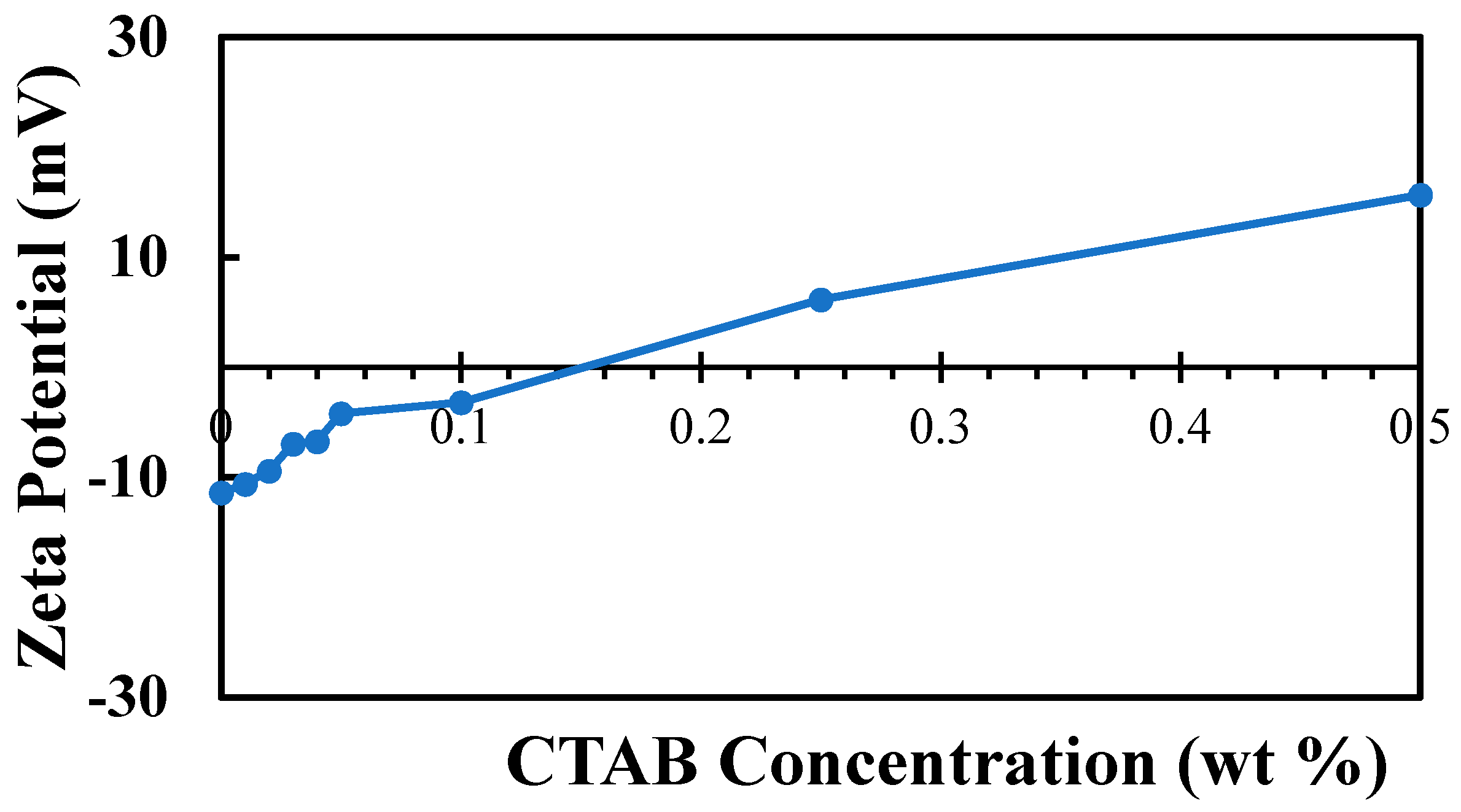

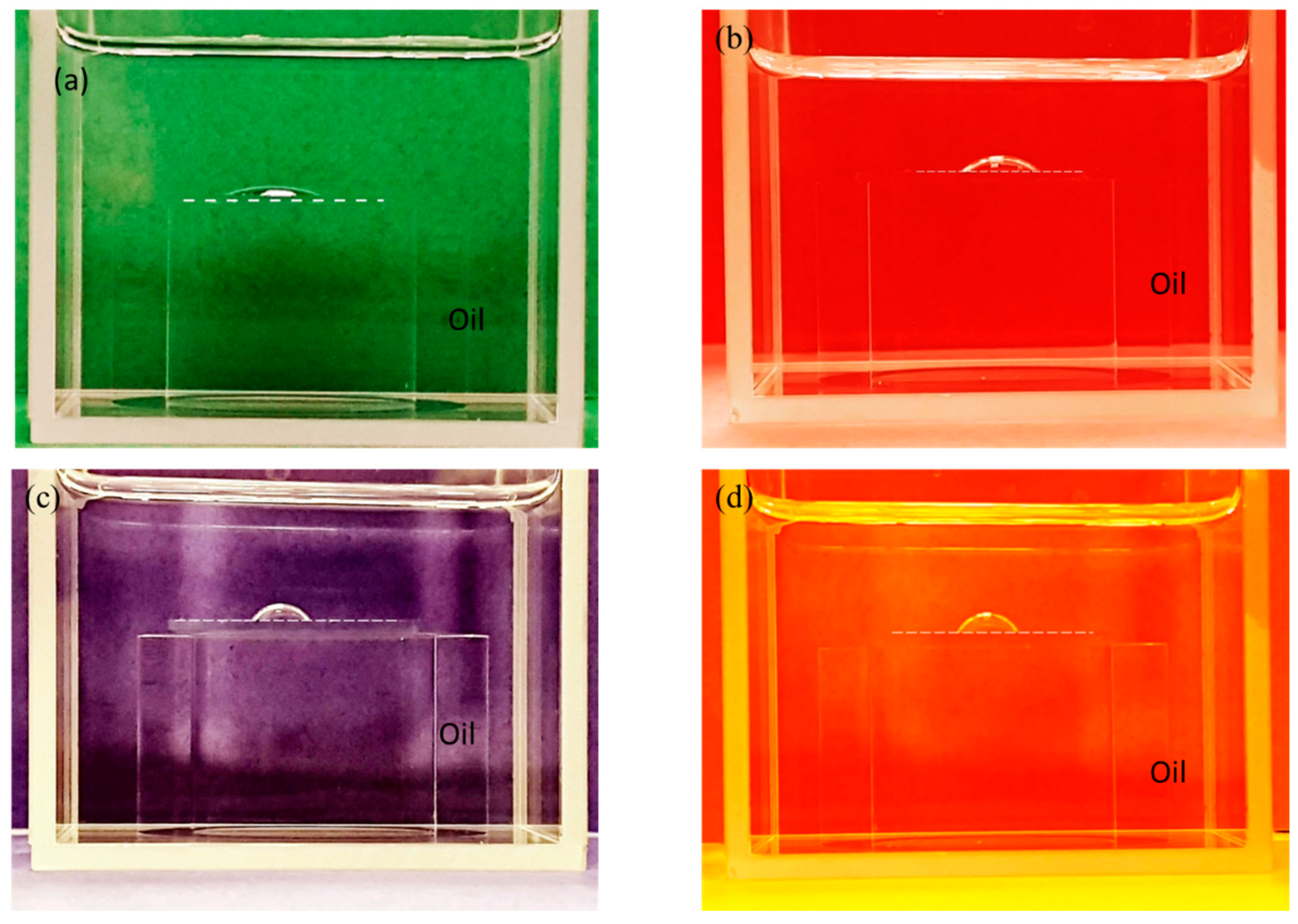



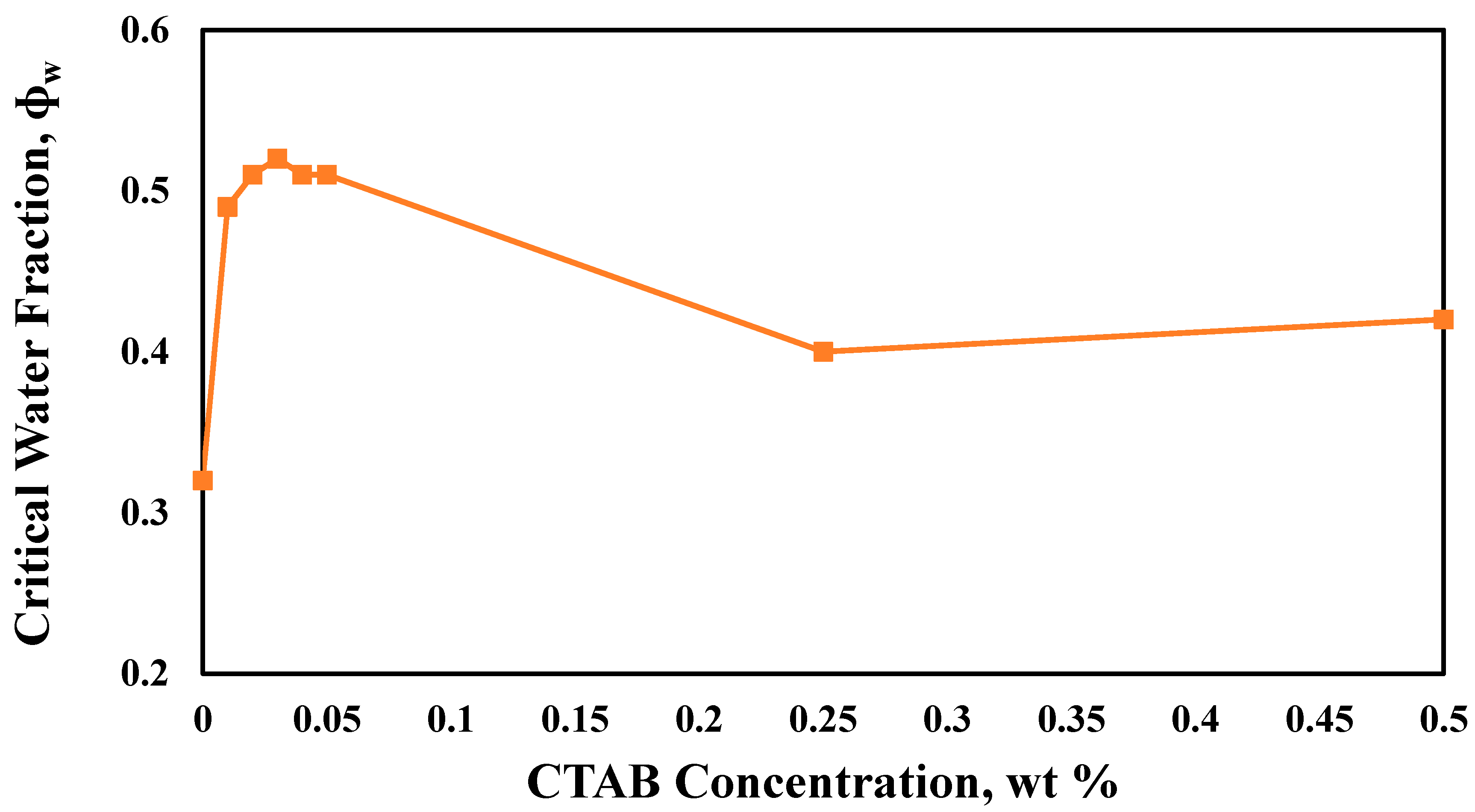
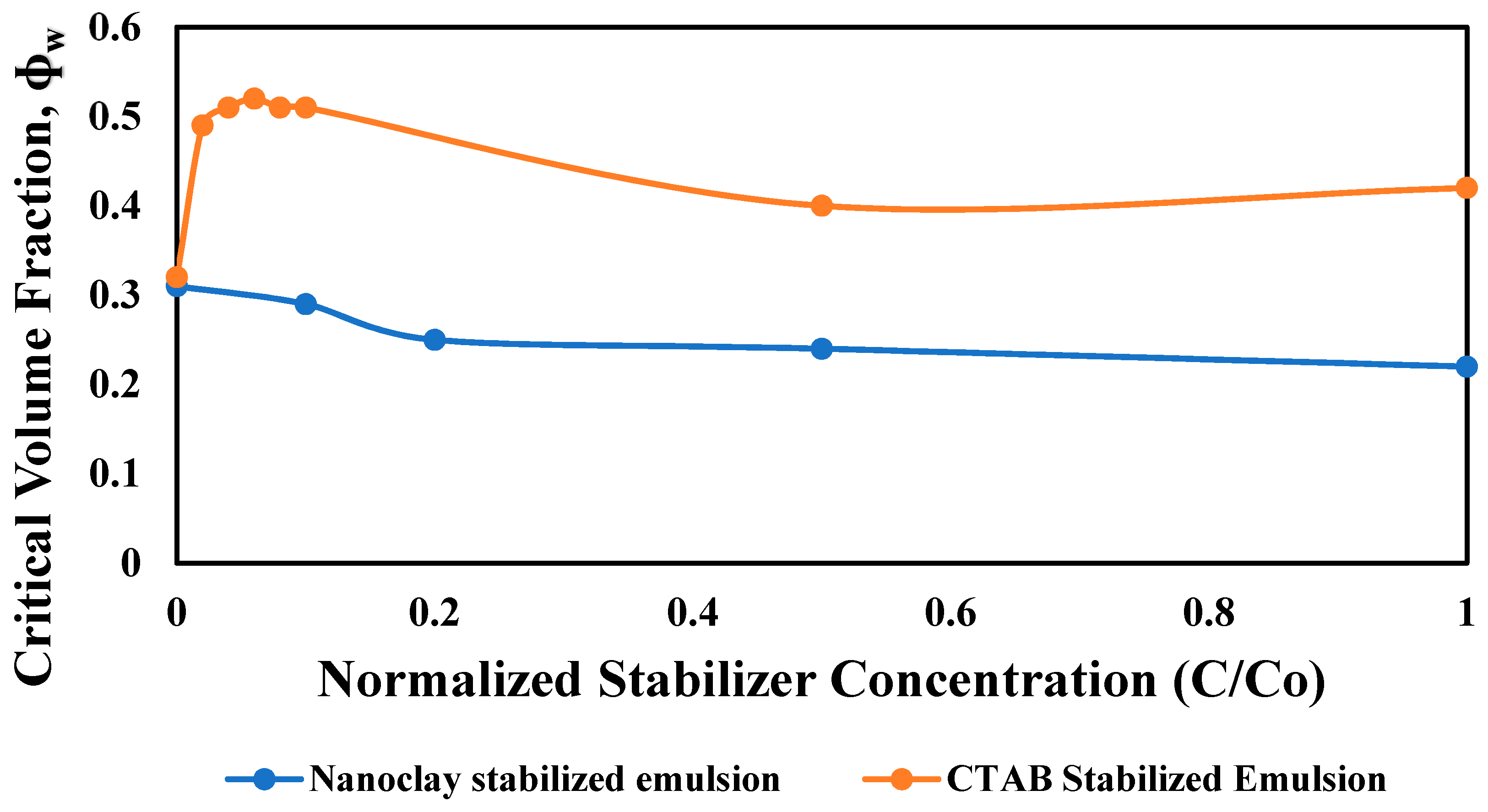
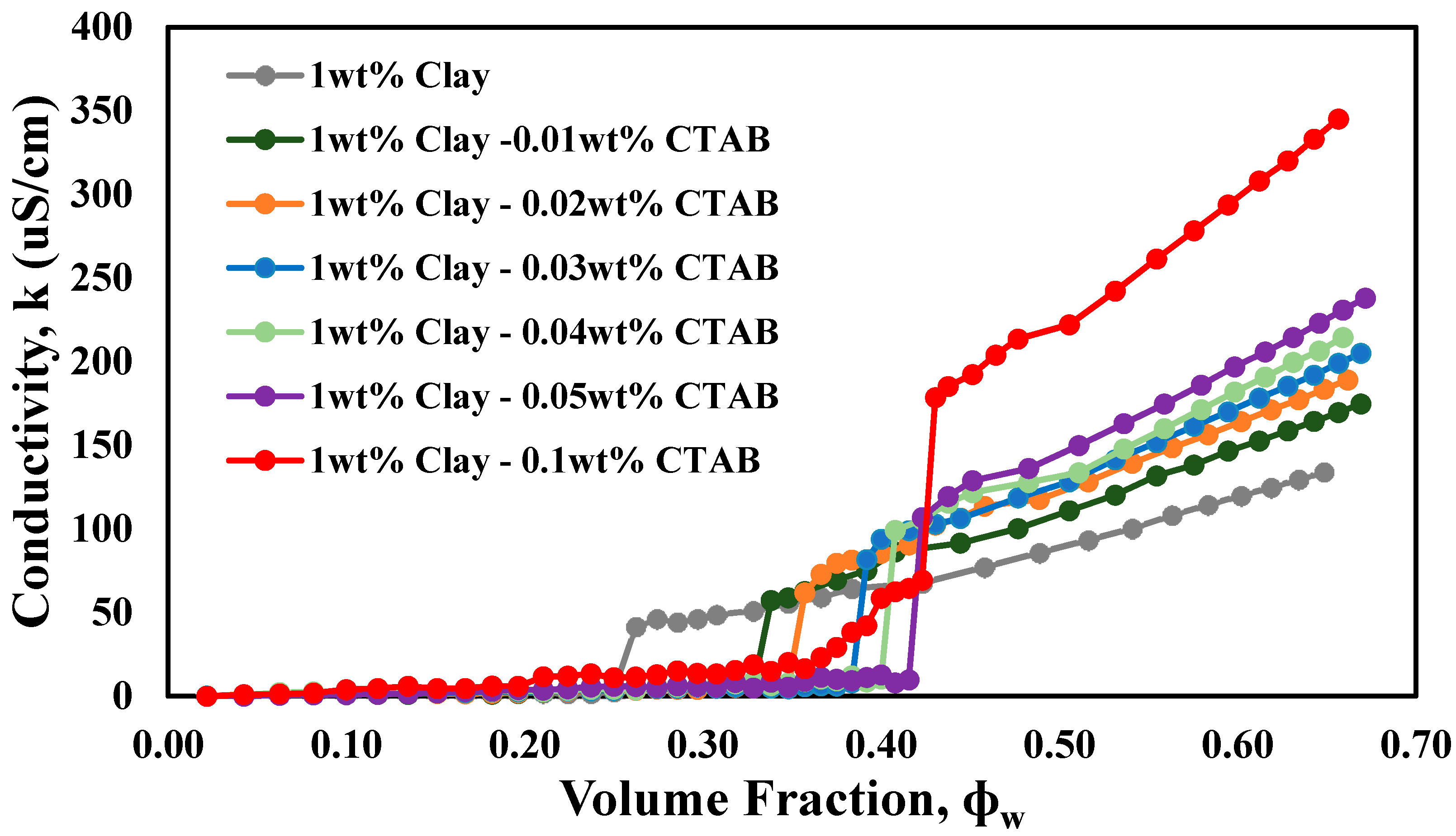
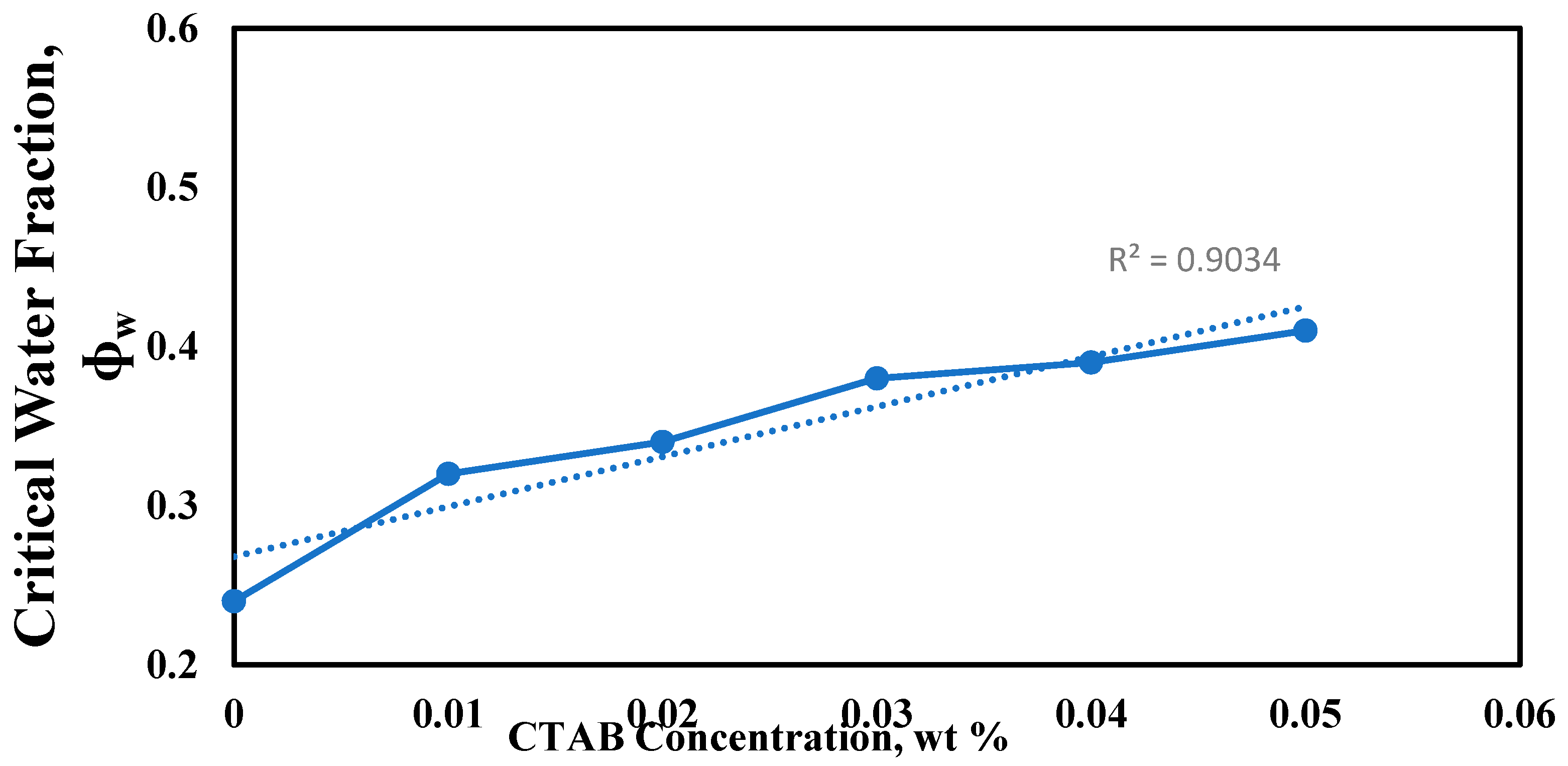
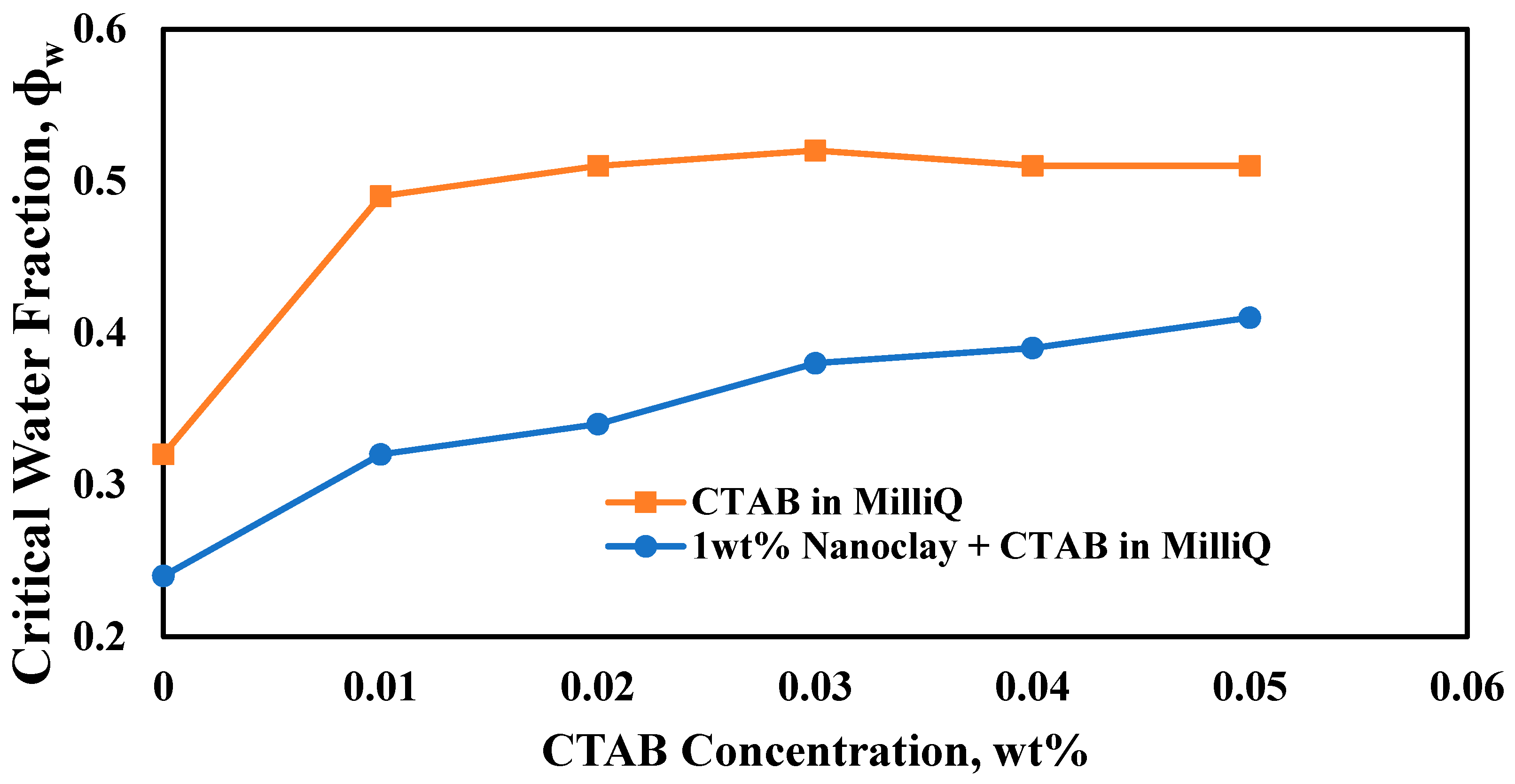
© 2020 by the authors. Licensee MDPI, Basel, Switzerland. This article is an open access article distributed under the terms and conditions of the Creative Commons Attribution (CC BY) license (http://creativecommons.org/licenses/by/4.0/).
Share and Cite
Ogunlaja, S.B.; Pal, R. Effects of Bentonite Nanoclay and Cetyltrimethyl Ammonium Bromide Modified Bentonite Nanoclay on Phase Inversion of Water-in-Oil Emulsions. Colloids Interfaces 2020, 4, 2. https://doi.org/10.3390/colloids4010002
Ogunlaja SB, Pal R. Effects of Bentonite Nanoclay and Cetyltrimethyl Ammonium Bromide Modified Bentonite Nanoclay on Phase Inversion of Water-in-Oil Emulsions. Colloids and Interfaces. 2020; 4(1):2. https://doi.org/10.3390/colloids4010002
Chicago/Turabian StyleOgunlaja, Sileola B., and Rajinder Pal. 2020. "Effects of Bentonite Nanoclay and Cetyltrimethyl Ammonium Bromide Modified Bentonite Nanoclay on Phase Inversion of Water-in-Oil Emulsions" Colloids and Interfaces 4, no. 1: 2. https://doi.org/10.3390/colloids4010002



